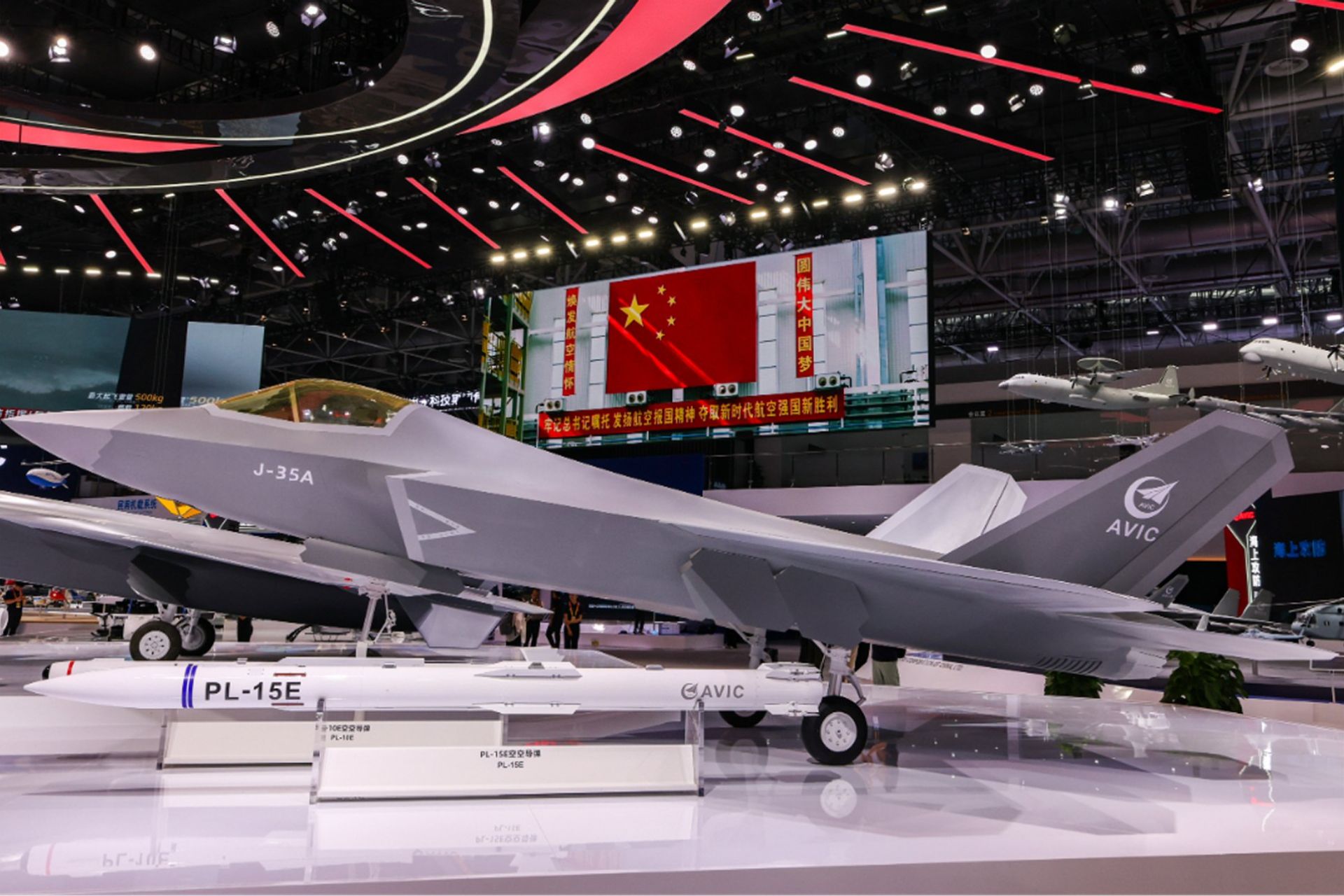Breaking News
J-35 Stealth Fighter to Enhance Chinese Aircraft Carrier Power.
According to information published by South China Morning Post on November 14, 2024, China has confirmed plans to deploy its newest fifth-generation stealth fighter, the J-35, on aircraft carriers, marking a step forward in the country’s naval aviation capabilities. The announcement, made by Sun Cong, a senior aviation engineer from the state-owned Aviation Industry Corporation of China (AVIC), was shared during the Zhuhai Air Show, where the J-35 was prominently displayed.
Follow Army Recognition on Google News at this link

China's J-35 stealth fighter, showcased at the Zhuhai Air Show, is set to join PLAN aircraft carriers alongside the J-15, marking a new era in naval aviation. (Picture source: Global Times)
The J-35, developed by AVIC’s Shenyang Aircraft Corporation, represents a significant evolution in China’s aviation technology. It is the country’s second fifth-generation fighter jet, following the land-based J-20. Unlike the J-20, which is larger and optimized for operations from ground airbases, the J-35 is designed explicitly for aircraft carrier deployment.
The J-35 is notable for its advanced stealth features, which include radar-absorbing materials and a design optimized for a reduced radar cross-section. These features make the aircraft harder to detect by enemy sensors, giving it a crucial edge in contested airspace. Its compact size allows it to operate efficiently on the limited deck space of aircraft carriers, while its avionics and weapons systems offer a platform for both offensive and defensive missions.
The fighter’s armament reportedly includes a mix of medium-range air-to-air missiles, supersonic air-to-ground munitions, and precision-guided bombs. This arsenal enables it to perform a variety of roles, including air superiority, strike missions, and reconnaissance.
The J-35 will join the J-15, currently the PLAN’s primary carrier-based fighter, aboard China’s two active carriers, the Liaoning and the Shandong. While the J-15 has proven capable in its role, its lack of stealth and heavyweight design limit its effectiveness in modern high-threat environments.
The addition of the J-35 addresses these shortcomings, allowing China to field a more balanced and capable air wing. The J-35’s stealth and advanced systems make it ideal for penetrating enemy defenses, while the J-15’s heavier payload capacity is suited for delivering large-scale strikes. Together, these aircraft represent a significant step forward in China’s ability to conduct joint maritime operations.
China’s forthcoming third aircraft carrier, the Fujian, is particularly critical to this integration. Unlike its predecessors, which use ski-jump ramps for aircraft launches, the Fujian features electromagnetic catapult systems (EMALS). These systems enable heavier and more fuel-laden aircraft like the J-35 to launch with greater efficiency, enhancing their range, payload, and operational flexibility.
The deployment of the J-35 is a direct response to China’s growing strategic challenges in the Indo-Pacific. As tensions rise over territorial disputes in the South China Sea and Taiwan Strait, the PLAN’s ability to project power and defend its claims becomes increasingly important.
The J-35 positions China to counter regional adversaries and rival powers, particularly the United States. The U.S. Navy’s F-35C, a carrier-based fifth-generation fighter, has long been regarded as the gold standard for naval aviation. By introducing the J-35, China aims to bridge the technological gap and demonstrate its ability to compete on equal footing.
Moreover, the J-35 could influence the balance of power in regional security arrangements. For instance, nations aligned with the U.S., such as Japan and South Korea, may be compelled to enhance their naval capabilities in response to China’s advancements. This dynamic is likely to intensify the ongoing arms race in the region.
While the J-35 represents a major technological achievement, its integration into the PLAN is not without challenges. The fighter’s performance and reliability in real-world carrier operations remain untested.
Another challenge is ensuring the seamless coordination of the J-35 with other elements of the PLAN’s carrier strike groups. This includes integrating the fighter’s advanced capabilities with China’s emerging naval network, which encompasses airborne early warning aircraft, drones, and surface ships.
The J-35’s deployment signals a broader shift in China’s military strategy. By fielding a carrier-based stealth fighter, China is asserting its intent to challenge U.S. dominance in the Indo-Pacific and establish itself as a global maritime power. This move is likely to provoke reactions from regional players and could reshape alliances and security dynamics.


























